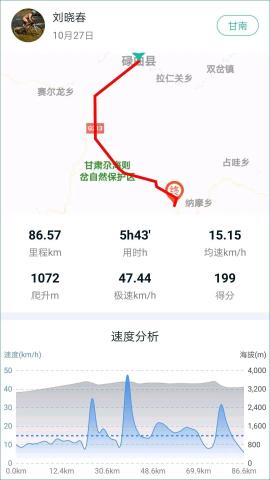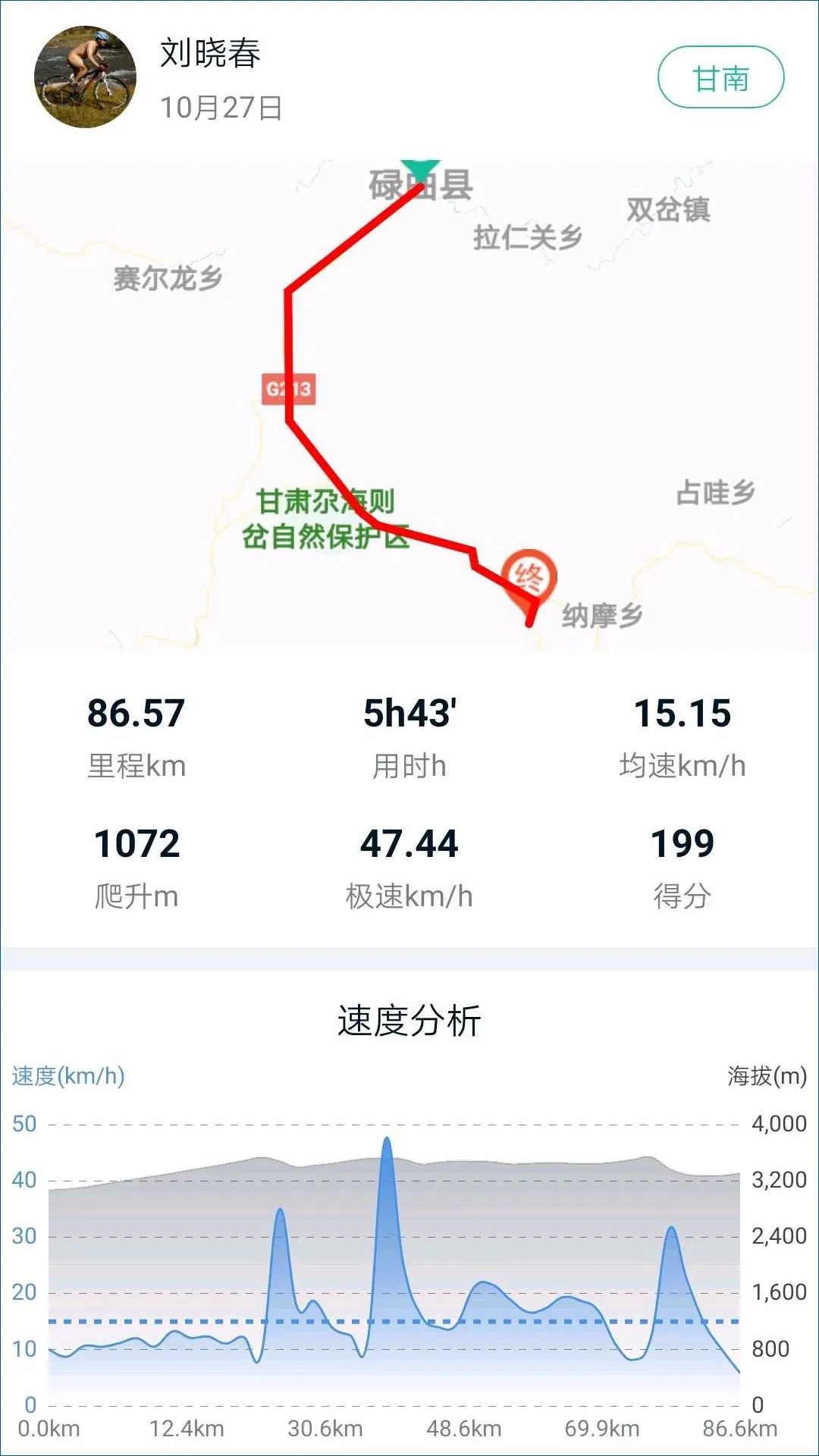



▲I took a mandarin duck bath with my mistress last night. I was exhausted. I slept well and felt energetic early in the morning (see the previous article for details, there is a link at the bottom)

▲The morning in Luqu County was only minus 5 or 6 degrees Celsius. Maverick and I put on all the clothes we brought.

▲This is a Tibetan area, and hidden dogs can appear at any time, so I brought a spring stick with me. In fact, if I really encounter a dog, I can’t hit it. It’s just to embolden myself.

▲The Watershed Observation Deck is located in Huage Grassland, 10 kilometers away from Luqu County, with an altitude of 3,615 meters. It is the watershed between the Yellow River and the Yangtze River. But there are mountains all around, and no water can be seen, neither the Yangtze River nor the Yellow River.

▲Introduction to the observation deck: The altitude here is 3615 meters, which is the watershed between the Yellow River and the Yangtze River. The Tibetan word for the watershed is "Lewe Jiamu Zhai Qima", which means that the road is far away and can tire out the donkey. The legend comes from Gesar myth.

▲It is generally believed that the Qinling Mountains are the watershed between the Yellow River and the Yangtze River in China. The watershed between the Yangtze River and the Yellow River in China is at the intersection of Hongyuan County, Aba, Sichuan, and Jiuzhi County, Luqu, Gansu. There is a grassland there, and the trickling water here becomes the source of the Yangtze River and the Yellow River. But in recent years, some people have emphasized that the broad watershed also includes the east-west mountain range in the southwest of the Qinling Mountains. Therefore, Luqu has promoted the watershed of its own territory in recent years and built this new viewing platform.

▲The mountains are arranged irregularly, high and low, fat, thin, and thin. The slopes are a little sparsely green, and there are snow on the peaks in the distance; the clouds are particularly beautiful, covering the sky, like big white cotton wadding; The ground is covered with thin grass, sometimes there are streams, and sometimes there are small pools; the wind is gentle, whispering around you, making the prayer flags flutter; the sun meticulously divides the mountains into yin and yang, showing different colors; The colorful prayer flags were slowly cut into rags by the wind and rain over time.

▲Cuoning is the seat of the Gahai Township People’s Government, and the residents are all Tibetans. Cuoning is a Tibetan language, meaning "the sun of the lake", so it is named after it is located in the northeast of Gahai Lake.

▲Gahai Lake is the largest freshwater lake in Gannan and an important wetland in the eastern part of the Qinghai-Tibet Plateau. It is known as a pearl on the plateau and a provincial migratory bird nature reserve.


▲Punch in at the 400km road sign




▲The journey was very difficult, with ups and downs at an altitude of 3,500 meters throughout the day. It took more than four hours to walk 50km, which was too slow.

▲Under a sky full of dark clouds and headwind, we finally walked through Gansu Province and arrived at the Sichuan border.

▲Langmusi is very interesting. On the right is the Gansu temple and on the left is the Sichuan temple.

▲Langmusi Town is a small town under the joint jurisdiction of Luqu County in Gansu and Ruoergai County in Sichuan. The Bailong River passes through the town. Among them, Saichi Temple in the north of the Yangtze River belongs to Luqu County, Gansu Province, and is also called "Dacanglangmu Saichi Temple". In the south of the Yangtze River, there is the Gerdi Temple, which belongs to Ruoergai County, Sichuan, and is also called "Dacanglangmu Gerdi Temple". All temples belong to the Gelug sect of Tibetan Buddhism.

▲It was closed when we arrived, but we could go in and save 30 yuan on admission.



▲There are many hotels in the town with complete accommodation conditions. There are hotels, B&Bs, youth hostels and other high, middle and low-end accommodations of different levels, with prices ranging from tens to hundreds of yuan. It's off-season now, so the price of Tibetan-style hotels is not high, with a standard room priced at 100 yuan.




▲A small stream flows through the town. Although it is less than 2 meters wide, it is named "Bailong River". The north of the stream is the "Saichi Temple" in Gansu, and the south bank is the Andakang Langmusi Temple in Ruoergai County, Sichuan. There is a Hui mosque in the middle, and the two Tibetan Buddhist temples face each other across the "river" here.


▲A stream combines two ethnic groups, the Tibetan and the Hui, who coexist peacefully. Lamaseries and mosques exist on their own. People on both sides of the stream express their persistence in their faith in different ways. They display the Buddha and worship.

▲We visited a Sichuan temple at night with Xiao Niu and encountered a grand debate scene. Even for me who doesn’t understand Tibetan, the whole debate process was not boring. Just watching the questioner's aggressive voice and debating gestures like "making hands" in Peking Opera is eye-opening.

Like the spectators outside the sutra hall, Maverick and I were dumbfounded and forgot about the time. Maverick even thought about not leaving and would have a good time here tomorrow for half a day.
